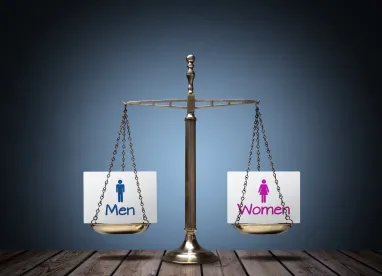Let’s say you are tired of your current position and want to try something new with the same employer. You apply for a job transfer, and you are turned down. Then you find out that other people were able to make the move more easily. If those other people are of a different race or sex or other protected classification, can you file a discrimination claim under Title VII? In the past, in some Circuits, you couldn’t do it unless you could show that the denial caused you “objectively tangible harm.” However, in Chambers v. District of Columbia, the D.C. Circuit recently decided that the additional requirement of that harm was not supported by the language of the statute.
Ms. Chambers Sought Different Chambers
The plaintiff, Mary Chambers, worked in the D.C. Office of the Attorney General for over 20 years. She sought numerous transfers to different units in the office but never got the job. She ended up filing a charge of sex discrimination with the EEOC claiming that similarly situated male employees had been granted transfers like the ones she had been seeking.
The district court applied a 1999 D.C. Circuit case, Brown v. Brody, in which the court held that the denial or forced acceptance of a job transfer is actionable under Title VII only if the employee could prove he or she suffered “objectively tangible harm.” Under this standard, the district court stated that even if the denial of her transfers had been motivated by sex discrimination, Chambers had not proven the harm required. The court granted summary judgment for the defendant.
Appeal So Interesting, It Was Heard Twice
Undeterred, Chambers appealed to the D.C. Circuit. On its initial review, the court held that they were bound by Brown and affirmed the summary judgment. However, based on some strong concurring opinions, the court decided to hear the case en banc (meaning all the judges on that circuit consider the case together instead of just a three-judge panel).
The issue before the en banc panel was the fact that nowhere in Title VII is there a requirement that a plaintiff prove that an employer’s discriminatory act caused “objectively tangible harm.” The court looked at the plain meaning of the statute and held that refusing an employee’s request for a transfer while granting a similar request to a similarly situated coworker is treating one employee worse than the other. If that was done based on a statutorily protected classification (like sex), then the “analysis is complete.” Title VII has no requirement to show any “objectively tangible harm.” The court chose not to accept the argument that allowing this type of litigation would result in de minimus employment decisions being highly litigated. Instead, it relied on the fact that Title VII does not include such a standard of proof.
Where Do We Go from Here?
The court found that decisions that change an employee’s position can be an adverse employment action and therefore covered by Title VII. Employers should be aware that there are many steps in an employee’s journey and that at each one, the employer should make sure that the decisions are being made without regard to any of the federally protected classes.





 />i
/>i

